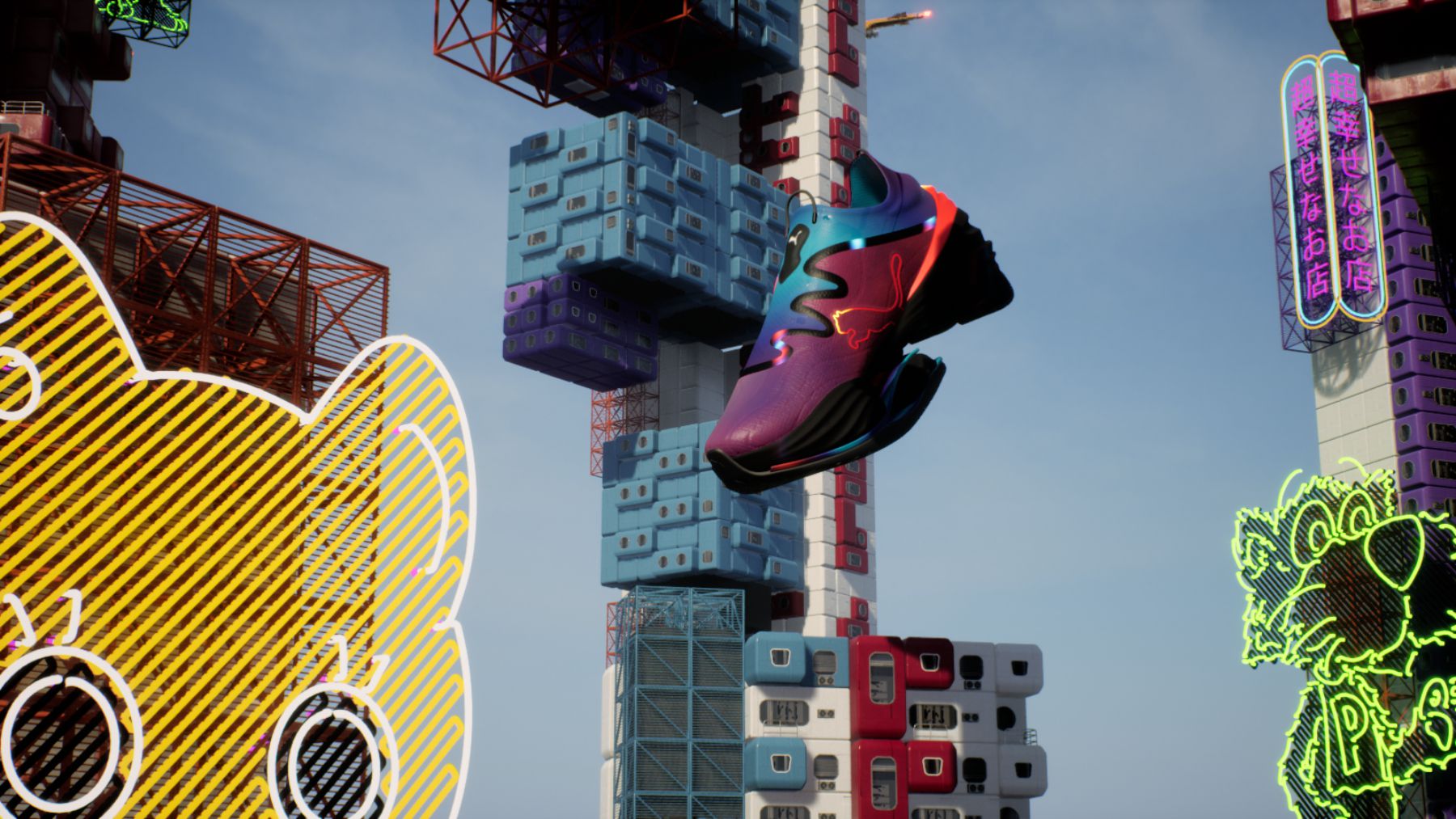
For Puma, embracing the virtual world has been a learning experience.
A year ago, during New York Fashion Week, it introduced Black Station, a 3D online space to showcase new products and ideas that Puma used to launch two new sneakers, the NFRNO and Fastroid, the physical versions of which buyers could only claim after purchasing corresponding limited-edition NFTs.
Black Station and the NFT-linked shoes represented new methods of connecting with customers for the company, whose biggest rivals, Nike and Adidas, had similarly made moves into selling virtual goods and establishing a presence in digital environments such as video games.
But new ways of working always come with bumps.
It proved difficult convincing shoppers to return to Black Station without a product release or event to draw them. Puma now also needed to make shoes to order. It sold 2,000 each of the NFRNO and Fastroid NFTs. As shoppers redeemed them, Puma had to manufacture and ship the physical products, which meant months until delivery. Normally, it produced its shoes in large volumes with several months of lead time, sent them to its stores and distribution centres and then sold them.
“There were definitely challenges on the way,” said Ivan Dashkov, Puma’s head of emerging marketing tech and web3. “There were new work streams and new processes that we had to build out.”
Since Black Station’s launch, the NFT market, which was already struggling, has all but disintegrated. Metaverse hysteria has further dwindled. It would be understandable, maybe even expected, for Puma to pull back on those efforts.
It hasn’t.
In February, Puma launched a collection of 10,000 NFTs called Super Puma. In June, it debuted Black Station 2, an updated and expanded version of its online world where users can explore two new spaces, one in the clouds and one underground, theoretically giving them more reason to spend time in the space. It used the channel to release a new shoe, the Fast-RB, again only accessible to NFT holders — except this time one NFT corresponded to a physical shoe while another was a digital-only colourway.
The company, which turned 75 this year, is among those trying to capitalise on the number of consumers today spending time in video games and buying cosmetic skins and digital items. It sees a long-term opportunity in virtual spaces and products, which Dashkov said create new ways of interacting with the brand, help Puma to meet a new generation of shoppers where they live and, eventually, could become a significant source of revenue.
Between its latest projects and its collaborations in gaming with Roblox and Fortnite, what Puma has learned is that many consumers are willing to pay for purely digital items, Dashkov said. Over the next three to six months, it has more launches planned across different platforms as it tries to ramp up sales of digital goods and build its footprint in virtual products and experiences.
“First, from a cultural perspective, people are spending a lot of their money, a lot of their time interacting with their friends, interacting with different brands, interacting with different types of IP, so we want to be there,” Dashkov said. “The second is a financial perspective. Right now, the revenue is probably small. It’s nickels and dimes here and there. But as we look at the long-term future of this, we see it as potentially growing to a decent part of our business as well.”
The collapse of the NFT market probably doesn’t help, but Dashkov said he wasn’t surprised by the bust. The frenzy was unsustainable in his view, and now he believes there will be a shift toward different uses of the technology, an opinion espoused by others in the web3 space, too. But it doesn’t diminish the potential of virtual goods more broadly, including all those that are not on the blockchain. Users are still flocking to platforms like Roblox, after all, and buying digital items there.
He noted that a virtual space like Black Station gives customers a new means of interacting with Puma besides the usual store or website experience, which he described as being more static. It also allows anyone who might not be able to attend a release party in a city like New York or Paris to participate online.
But to make the most of it, the company also needs to give customers a reason to visit on a more regular basis. Entering Black Station right now, it can feel empty and a bit like a digital artefact, whereas games such as Fortnite are buzzing with other players. Part of Puma’s aim, however, is to make it a place to go even if there isn’t a special release happening.
“I would love to get more and more consumers in there,” Dashkov said, adding that they’re hoping to use it as a venue for more mainstream products as well.



